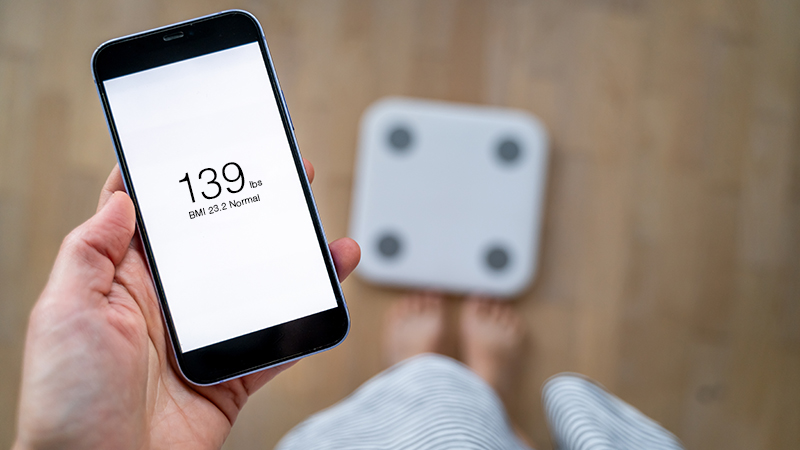Birth Control Breakdown
What Is Most Effective, What Is Best for You
Updated July 2023
Deciding to start birth control is one choice. Deciding which type of birth control to use? That comes with many choices.
Navigate your choices with insights from experts Kelly Forster, DNP, APN, certified women’s health nurse practitioner at Northwestern Medicine McHenry Hospital, and Heather Beall, MD, OB-GYN physician at Northwestern Medicine McHenry Hospital.
Hormonal IUD
99% effective
How It Works
The hormonal IUD is a small, T-shaped plastic device that sits at the top of the uterus and releases a small amount of the hormone progesterone. It works in two different ways. First, it thickens the mucus in the cervix (the entrance to the uterus), making it harder for sperm to enter. Second, the hormones on the IUD help stop ovulation (when the body releases the egg) and thin the lining of the uterus. This means that there may be no egg for the sperm to swim to, and if an egg happens to be released, it will be difficult to implant where it needs to in the uterus to establish a pregnancy.
Insertion can be painful, with intense cramping, but it typically only takes about 15 minutes. Cramping can last for a few days, or may come and go for a few weeks. With a hormonal IUD, you may have shorter and lighter periods, irregular periods, or possibly no periods at all. Although not everyone has hormonal side effects from the IUD, you may experience mood changes, headaches, weight gain or acne.
Is It Right for You?
The hormonal IUD may be a good choice for people who have heavier menstrual cycles and cramping with periods, as it can improve both of those conditions. A hormonal IUD is a long-term, low-maintenance birth control, with three- and five-year options available. Various hormone doses are available for people who would like a low-hormone option.
Non-Hormonal IUD
99% effective
How It Works
The non-hormonal IUD is a small, T-shaped device made of copper that can change the environment inside the uterus (where a pregnancy occurs), making it harder for sperm to survive and swim to the egg. If the sperm can’t reach the egg, it cannot create a pregnancy.
Side Effects
Like a hormonal IUD, insertion can be painful, with intense cramping, but it is usually done in less than 15 minutes. Unlike a hormonal IUD, you may experience heavier periods and more cramping. Irregular periods are also possible for approximately six months after insertion.
Is It Right For You?
If you are sensitive to hormones, can’t use hormones or just don’t like the side effects that can occur with a hormonal IUD, this may be a great option. This may also be a good fit for people who want a long-term, low-maintenance birth control option with a regular period for up to 10 years.
Implant
99% effective
How It Works
The implant is a small, flexible rod that is inserted in the upper arm. The device releases a small amount of the hormone progesterone over the three years it can stay in place. It is very similar to a hormonal IUD in the way it works: It changes the mucus in the cervix, helping stop sperm from entering; it can help stop the release of the egg (ovulation); and it thins the lining of the uterus, which makes it difficult for an egg to implant.
Side Effects
You may have very irregular periods, ranging from no periods at all to periods every few weeks, and you may have longer periods. Hormonal side effects are also possible, including weight gain, headaches, mood changes and acne. Bruising and soreness at the insertion site are common for the first few days after placement.
Is It Right For You?
Insertion of the implant is much simpler and less painful than an IUD. The implant provides an easy, long-term birth control option for up to three years.
The Pill
91% effective
How It Works
You take a pill each day that contains estrogen and progestin, a synthetic form of the hormone progesterone. This pill controls your cycle and stops ovulation. Progestin stops signals from the brain that tell your ovaries to produce eggs. It also thickens mucus in the cervix. This makes it hard for sperm to reach eggs to fertilize them. Too much progesterone can stop estrogen production, and you need estrogen for many things. Low estrogen can cause fatigue, mood swings, sleep issues, body temperature regulation issues and decreased libido, or sex drive.
There is not just one "birth control pill." There are many types of birth control pills with different combinations of estrogen and progestin. There are also progestin-only pills, such as Opill, the first birth control pill available over the counter without a prescription. You must take these pills at the same time each day. The pills use low doses of progestin that do not stay in your body for long. If you do not take progestin-only pills at the same time each day, you may need to use back-up birth control method like emergency contraception or a condom.
Side Effects
Some people experience nausea, headaches or breast tenderness as side effects of birth control pills. There can also be a fair amount of midcycle spotting.
Is It Right For You?
The pill is an option if you can commit to taking it every day. It can be effective to treat acne, and it can also help people who have heavy periods or painful cramps.
Condoms
85% effective
How They Work
Condoms work by providing a barrier to prevent sperm from entering the uterus, thus preventing pregnancy. Some condoms also have a spermicide coating that kills the sperm and adds more pregnancy prevention. They also provide protection against STDs, which all sexually active people should be concerned about preventing.
Condoms can slip off, break or have a tiny hole that you cannot see. That’s why, for birth control, people who use condoms should also use a second means of pregnancy prevention.
Side Effects
Condoms will cause allergic reactions if you have a latex allergy.
Are They Right For You?
Condoms may be a good choice for people who want to delay pregnancy but are not seeking a long-term birth control solution, such as in between pregnancies. They can also be a good option for people who are 40 and older, when fertility is declining.
The Patch
91% effective
How It Works
The patch, worn on your skin, releases estrogen and progesterone that your body absorbs through your skin to prevent ovulation. The patch is not commonly used, as it is only available in one dose, equivalent to 50 micrograms of estrogen. This is a large amount of estrogen. To put this in perspective, most birth control pills contain 20 micrograms of estrogen.
Side Effects
Some people experience bleeding between periods, headaches, breast tenderness or nausea. You may also notice tenderness on your skin where the patch is.
Is It Right For You?
If you don’t want to take a pill every day and still want to use non-invasive hormonal birth control, the patch is an effective option.
The Ring
91% effective
How It Works
The ring contains estrogen and progesterone, just like the pill. You insert the ring into your vagina once a month, and your body absorbs the hormones. The ring contains 15 micrograms of estrogen, which is less estrogen than most birth control pills. Because you don’t have to worry about forgetting a pill, the dose can be lower.
Side Effects
Some people experience vaginal irritation or differences in discharge. Side effects that come with hormonal birth control methods, like nausea, headaches and vomiting, are also common.
Is It Right For You?
If you don’t want to take a pill, the ring may be a good choice for you.
The Shot
More than 99% effective
How It Works
Your physician administers progestin through an injection every 13 weeks. There is no estrogen in the shot. Progestin stops signals from the brain that tell your ovaries to produce eggs. It also thickens the mucus in the cervix, making it hard for sperm to reach eggs to fertilize them.
Side Effects
Side effects may include irregular bleeding. The shot has also been linked to weight gain and reduced bone density.
Is It Right For You?
If you do not want to take a pill daily, are looking for an estrogen-free option and do not mind visits to your physician every 13 weeks, the shot may work for you.
Emergency Contraception
Up to 95% effective if taken in the first 24 hours; varies based on how soon it’s taken.
How It Works
Depending on where you are in your menstrual cycle, the “morning-after pill” works by either keeping the ovary from releasing an egg or by altering the lining of the uterus so that a fertilized egg can’t implant in the uterus. It is most effective if taken within 72 hours of unprotected sex or contraception failure (like a broken condom), but the sooner it is used, the more effective it is likely to be. It is available over the counter without a prescription. This method is for emergency situations only and should not be used as regular birth control.
Side Effects
You may experience nausea or vomiting, dizziness, fatigue, headaches, breast tenderness, cramps and temporary changes in your menstrual cycle.
Is It Right For You?
Emergency contraception is not recommended as a form of birth control. It is not meant to be used every time you have sex. If you had unprotected sex, are not on any other type of birth control and do not want to get pregnant, emergency contraception is a good option.
Consult your OB-GYN to find the method that’s right for you.






